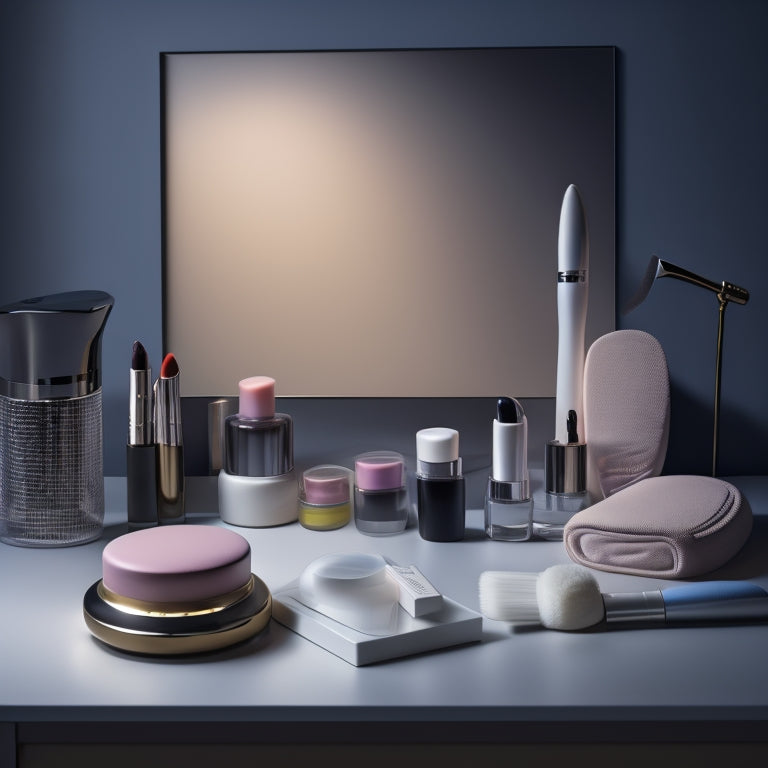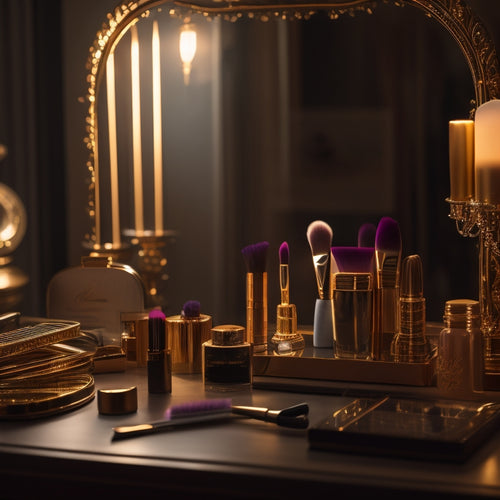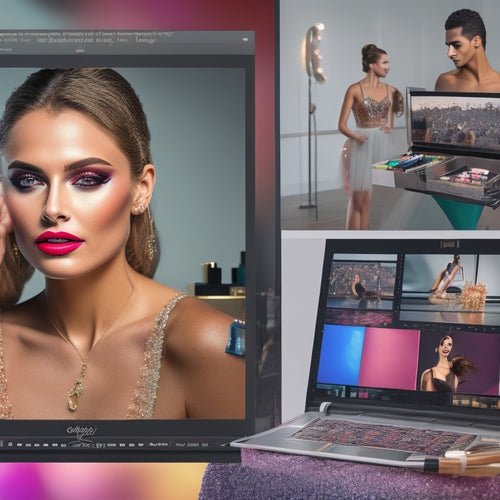
Crafting Beauty: Makeup Artist's Creative Responsibilities
Share
A makeup artist's creative responsibilities encompass a trifecta of skills: translating client visions into bespoke beauty, mastering the art of subtle enhancement, and staying ahead of the curve in an ever-evolving industry. They must possess a deep understanding of client desires, facial anatomy, and color theory to craft personalized looks that exceed expectations. By staying attuned to beauty trends and translating them into innovative styles, artists empower clients to feel seen, heard, and confident. As the beauty landscape continues to shift, the most skilled artists will be those who can balance creativity with technical precision, and that's just the beginning.
Key Takeaways
• A makeup artist's creative responsibility is to translate client visions into tangible realities, exceeding expectations through attentive listening and collaboration.
• Mastering facial anatomy and color theory enables artists to enhance natural beauty, creating flawless, radiant complexions through subtle techniques.
• Staying updated on beauty industry trends and forecasting emerging styles allows artists to craft innovative looks that captivate clients.
• Understanding client desires, preferences, and style is crucial to empowering them to feel seen and heard through custom creations.
• Transforming client essence into art that enhances natural beauty and personality is a key responsibility of a makeup artist.
Bringing Client Visions to Life
As a makeup artist, the ability to translate a client's vision into a tangible, breathtaking reality is a hallmark of exceptional skill, requiring a deep understanding of their desires, preferences, and personal style. This creative collaboration empowers clients, allowing them to feel seen and heard.
By listening attentively to their needs, a skilled artist can craft custom creations that exceed expectations, yielding unparalleled client satisfaction. Through open communication and a willingness to adapt, the artist can distill the client's essence, transforming it into a work of art that not only enhances their natural beauty but also reflects their unique personality.
This synergy of creative collaboration and client empowerment is the foundation upon which truly remarkable makeup artistry is built.
Mastering the Art of Enhancement
Beyond the domain of creative collaboration, a makeup artist's true mastery lies in the subtle yet profound art of enhancement. This is where the nuances of facial anatomy and the subtleties of color theory converge to create a flawless, radiant complexion that amplifies the client's natural beauty.
Staying Ahead of Beauty Trends
To remain at the forefront of their craft, a makeup artist must tap into the pulse of the beauty industry, consistently seeking out inspiration from the latest fashion and beauty trends, and translating them into innovative, show-stopping looks that captivate their clients. Trend forecasting is crucial, as it enables artists to anticipate and incorporate emerging styles into their work. Social media plays a significant role, with beauty influencers and bloggers showcasing the latest trends and techniques.
| Trend Forecasting | Makeup Techniques |
|---|---|
| Analyzing runway shows | Mastering techniques like strobing and contouring |
| Following beauty influencers | Staying updated on seasonal color palettes |
| Attending beauty events | Experimenting with new products and tools |
Frequently Asked Questions
What Is the Most Challenging Part of Being a Makeup Artist?
As a makeup artist, the most challenging part is balancing time management, perfectionism, and client satisfaction while combating creative burnout and industry competition, all while staying updated on the latest trends and techniques.
How Do You Handle Difficult or Demanding Clients?
"Diplomatically dealing with demanding clients demands delicacy, discernment, and dialogue. I establish clear client satisfaction goals, set professional boundaries, and employ effective communication strategies to manage expectations, ensuring a harmonious and high-quality collaboration."
Can I Specialize in a Specific Type of Makeup, Like Bridal or Film?
As a makeup artist, you can certainly specialize in a specific type of makeup, such as bridal, film, or editorial, where attention to detail is essential, or venture into special effects, fashion, or theatrical makeup, where creativity knows no bounds.
Do I Need to Have a Portfolio to Get Hired as a Makeup Artist?
'Pioneering professionals propel their passion with polished portfolios, paramount for procuring prestigious positions. Networking and freelancing opportunities flourish alongside experience, trumping training, as a proof of a makeup artist's mastery and versatility.'
How Often Should I Update My Skills and Training?
To stay ahead in the beauty industry, commit to continuous learning, staying abreast of industry trends, and investing in skill development through regular workshops and training sessions, ideally every 6-12 months, to refine your craft and remain competitive.
Related Posts
-

Top Dance Makeup Tools for Perfect Stage Looks
To create a flawless stage look, you'll need the right tools and techniques. Start with high-quality makeup brushes, ...
-

Learn Dance Makeup Artistry Online: A Step-by-Step Guide
You're about to begin an exciting journey to master the art of dance makeup online! First, you'll need to select the ...
-

Groove in Your Kitchen With Digital Download
With a digital download, you can instantly transform your kitchen into a vibrant space that reflects your personal st...


